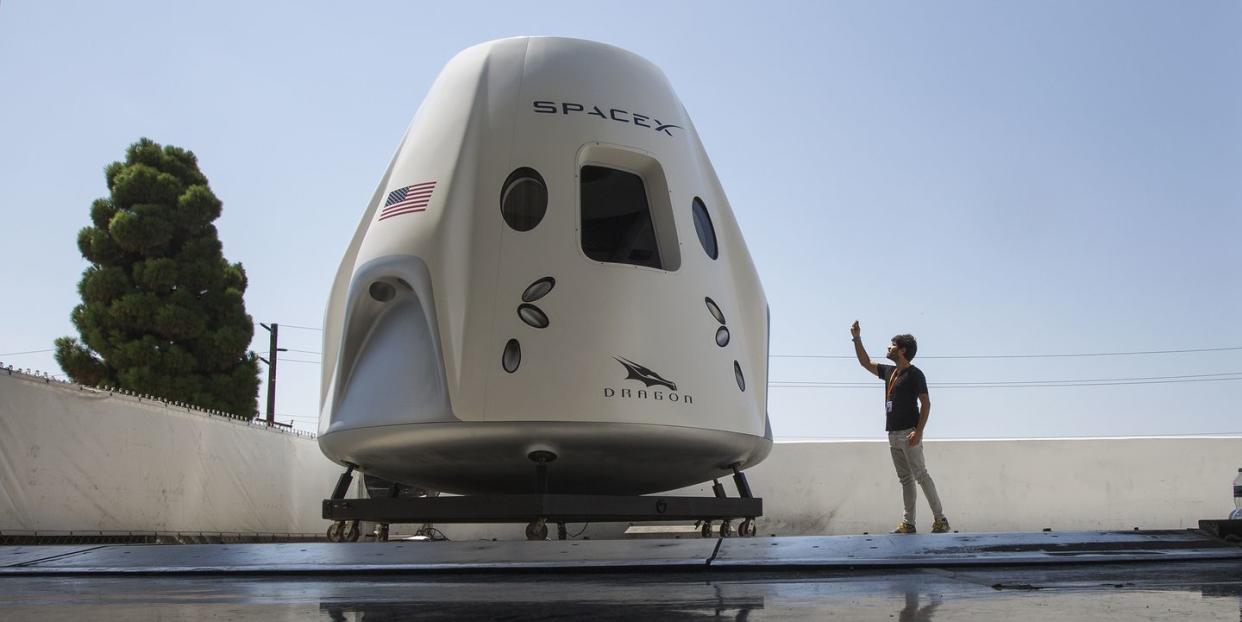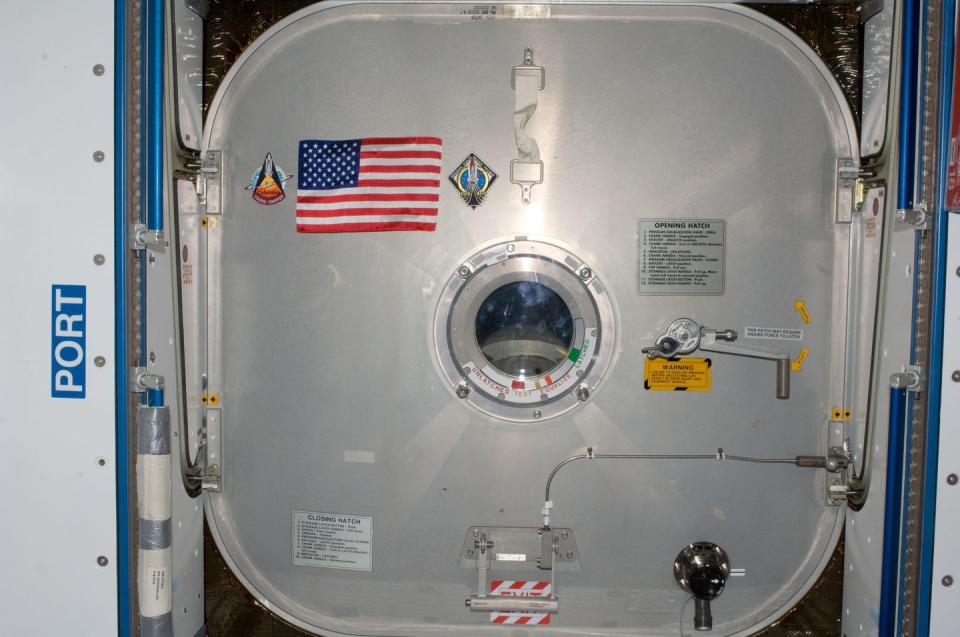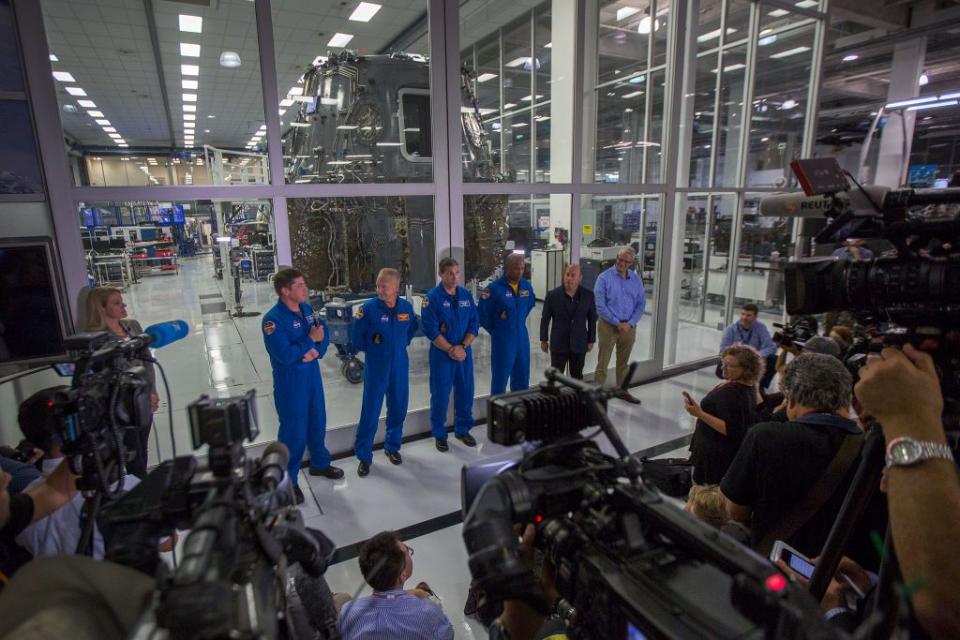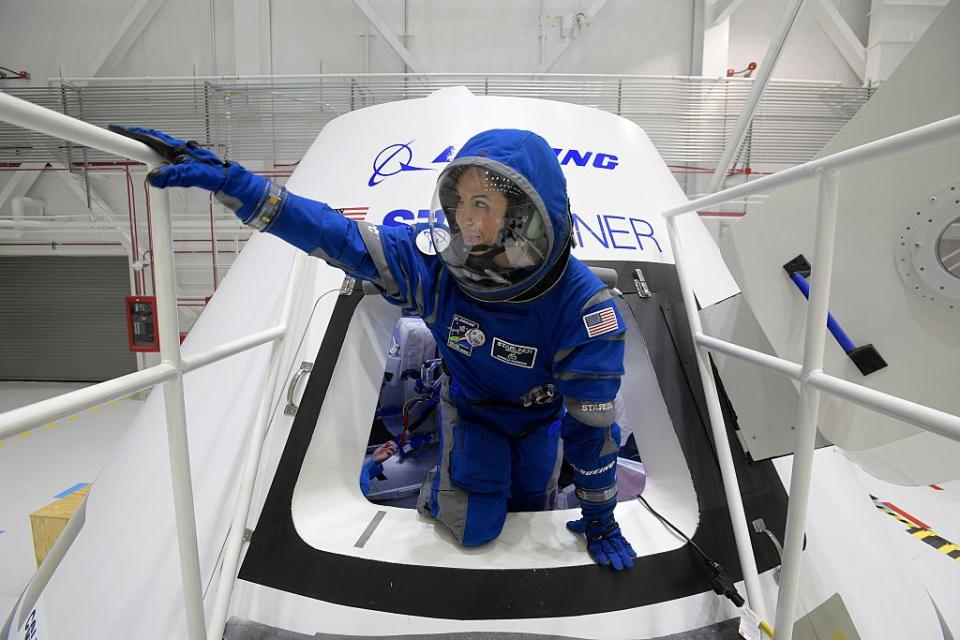America Is About to Take Back Human Spaceflight, and It's a Lot More Than Just Flag-Waving

There’s an American flag affixed to a hatch on the International Space Station, circling about 250 miles above the planet. The crew of the first space shuttle mission, STS-1, carried that very flag in 1981. The final shuttle flight, in 2011, left the flag behind in orbit to be claimed by the next crew to fly into space from U.S. soil.
This is the year the flag comes home.
A Long-Awaited Return

After years of radical invention, aerospace design, political feuding, and faith in ingenuity—and eight years since the shuttle retirement—the United States is on the cusp of recapturing the ability to reach space from U.S. soil. Two companies, Boeing and SpaceX, are assembling hardware for testing capsule launches, a dress rehearsal for future crewed flights.
It's a big moment for the U.S. For one, the launches represent a break from renting Russian hardware to launch astronauts. With recent feats by China in orbit and on the moon, the impulse among many Americans will be extreme pride verging on jingoism, and the return of the U.S. flag, stranded in orbit for the past eight years, will be a useful symbol.
Of course, some pride is warranted. After all, the modern NASA space program is doing something uniquely American—unleashing the private sector by opening space to commercial interests. Instead of owning the spacecraft and rockets, NASA pays for their development and enables companies to sell rides to anyone who wants a ticket.
But it's crucial that this achievement not be lost amid the flag-waving. There’s more at stake with these human launches than feeling good about the U.S. The flights planned from Florida in 2019 will change the way the world approaches human spaceflight.
Impending Astronauts

Observers and space freaks flocked to Kennedy Space Center yesterday to see the most tangible, dramatic sign of NASA’s commercial crew program progress yet. Shrouded in fog, SpaceX brought its Falcon 9 rocket, mated with the Dragon 2 capsule, to launch pad 39A for prelaunch testing. The capsule’s flight is scheduled for December 17, 2019.
Boeing will get its turn in March when its Starliner spacecraft will launch on an Atlas V rocket. These empty capsules will travel to orbit, rendezvous with the ISS, dock, detach, and return for splash-down in the Atlantic.
The second demonstration flights will have two test pilot astronauts each. NASA astronauts Robert Behnken, Eric Boe, Douglas Hurley, and Sunita Williams have been preparing for the missions for years, while also developing the capsules and training procedures for the operational missions.
This return to flight will likely happen this summer, around the time that the U.S. celebrates the 50th anniversary of the Apollo lunar landing. Although reminiscent of the Cold War, these launches will be a declaration of independence from the Soyuz capsule.

A space program is still seen as a qualification of a true global superpower, but these manned space missions have an inflated importance when it comes to geopolitical perceptions. In terms of immediate economic impact and national security, CubeSats in low-Earth orbit are more important than any crewed spaceship.
But that will change as space programs mature and the exploration and industrialization of space begins. To see the full, dramatic impact of 2019’s flights requires looking at spaceflight on a longer timeline.
One of the things that becomes clear—looking past the contract to deliver astronauts to ISS—is that American spacecraft will also enable other nations to access space. The customer base for these spacecraft will extend to Europe, South America, Asia, and Africa. The Dragon 2 and Starliner will fly Americans at first, but the whole point is to sell them on the open market.
The American space program could even help geopolitical foes, particularly if export laws are relaxed. John Lodgson, founder of the Space Policy Institute at George Washington University, once listed some potential customers in an interview with Popular Mechanics.
“Thinking off the top of my head, the United Arab Emirates,” Lodgson says when prodded to name for possible customers. “Nigeria? Iran always wanted a human spaceflight program.”
He also said that China’s program could benefit. “China has said that its space station is open to non-Chinese visitors,” he said. “So where does that fit in to the future of human spaceflight?”
Entering a New Spacefaring Future
In the grand scheme of humanity's exploration of space, the commercial crew achievement in Florida seems less like an American victory and more like a global moment.
It’s a major transition away from government control, and while this hopefully will have major economic and national security advantages, it’s hard to see NASA’s outsourcing as the pinnacle of government success.
Even with delays and engineering snafus, the coming success of this program should put an end to the debate over whether private businesses can be trusted with crewed spaceflight. NASA has adopted the model that the Commercial Crew program will create a new generation of lunar landers. If these work as planned, the NASA-sponsored landers will be touching down to start planning a lunar outpost, around the same time as other nations are doing the same.
There are many red flags surrounding the American timelines for human missions to the moon and Mars. Administrations change, budgets shift, and missions are killed off with spreadsheet keystrokes. But if—or when—Uncle Sam cuts exploration funds, the private companies who created the hardware will still be in the race, using the moon equipment originally designed for NASA.
The space industry could finally have what it always needed and something the Chinese already enjoy—a steadily funded space program with unchanging destinations and an immunization from political point-scoring. The private sector may be the way to keep some continuity in human space exploration. That is, if there’s money to be made.
2019: A New Era
So be proud of the American victory we will witness in Florida this year. Be happy that the Soyuz contracts will be replaced by something better. Be relieved that the space hardware will no longer be a political football between Moscow and Washington, DC. Be inspired by the engineering on display and the political courage inside and out of NASA to loosen their grip.
But don’t wave the flag too hard. If you do, you might just miss the bigger picture—2019 is the year humanity democratized spaceflight and created a reliable gateway to a new frontier for future generations.
You Might Also Like

 Yahoo News
Yahoo News 
